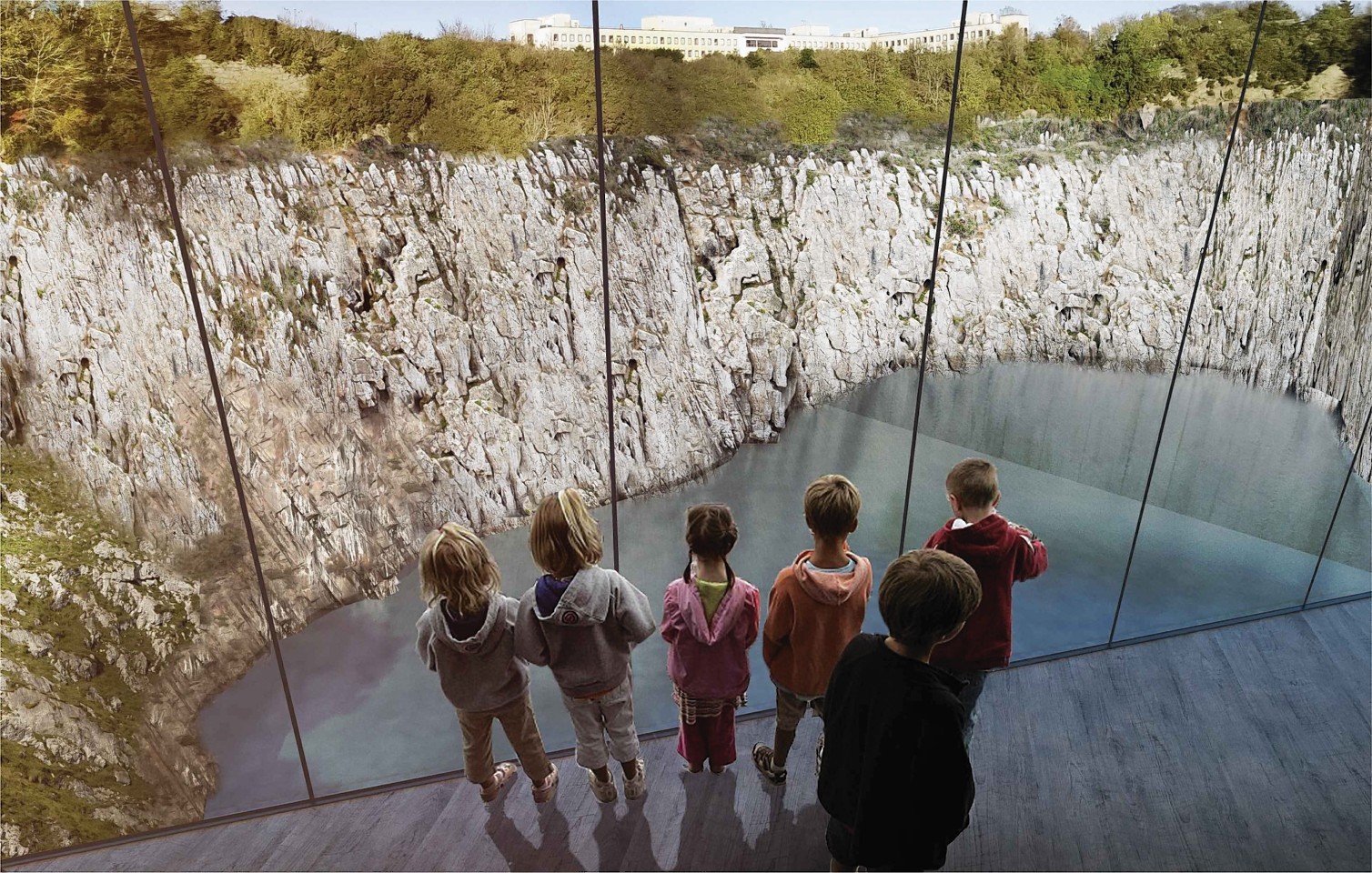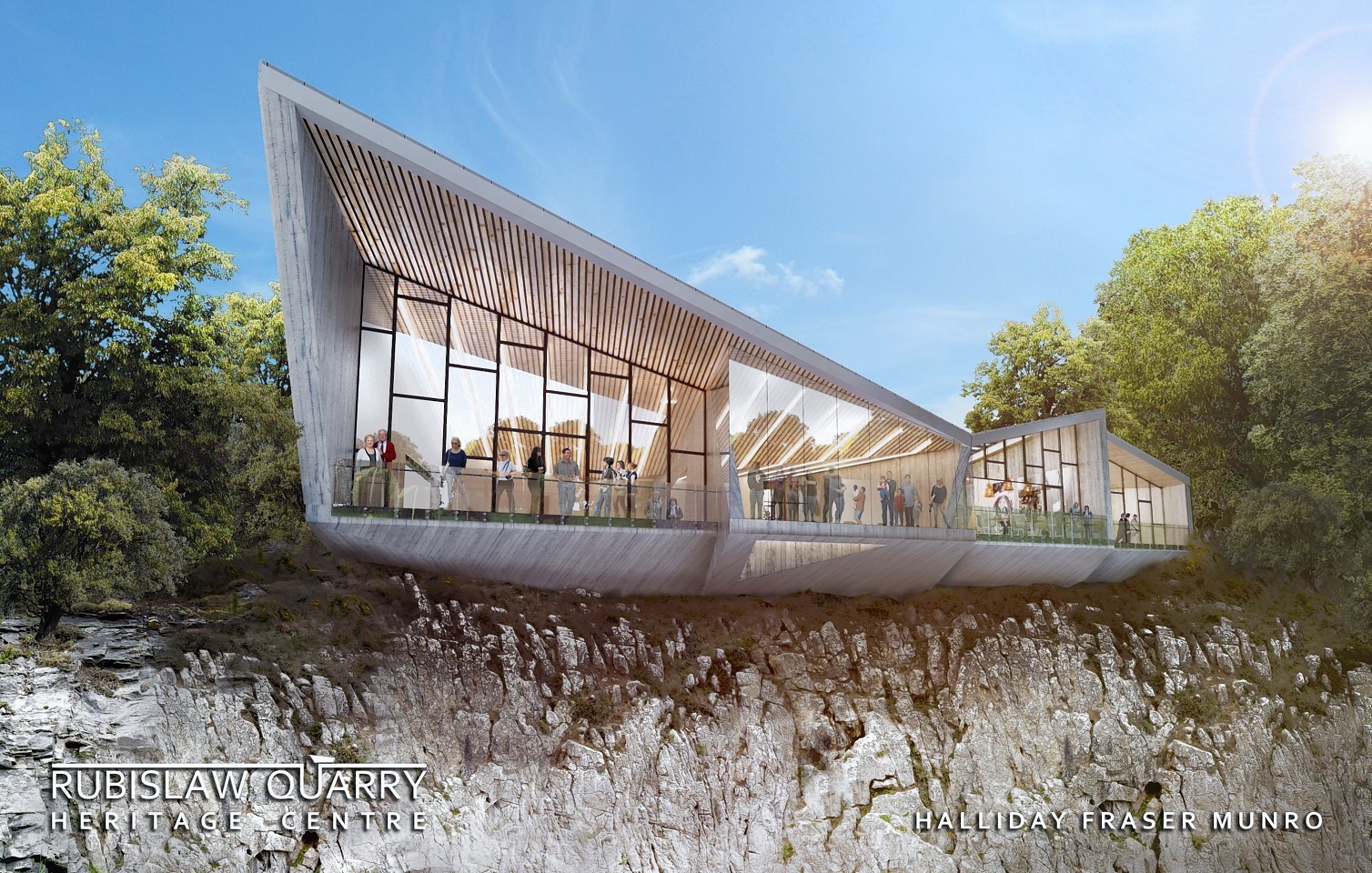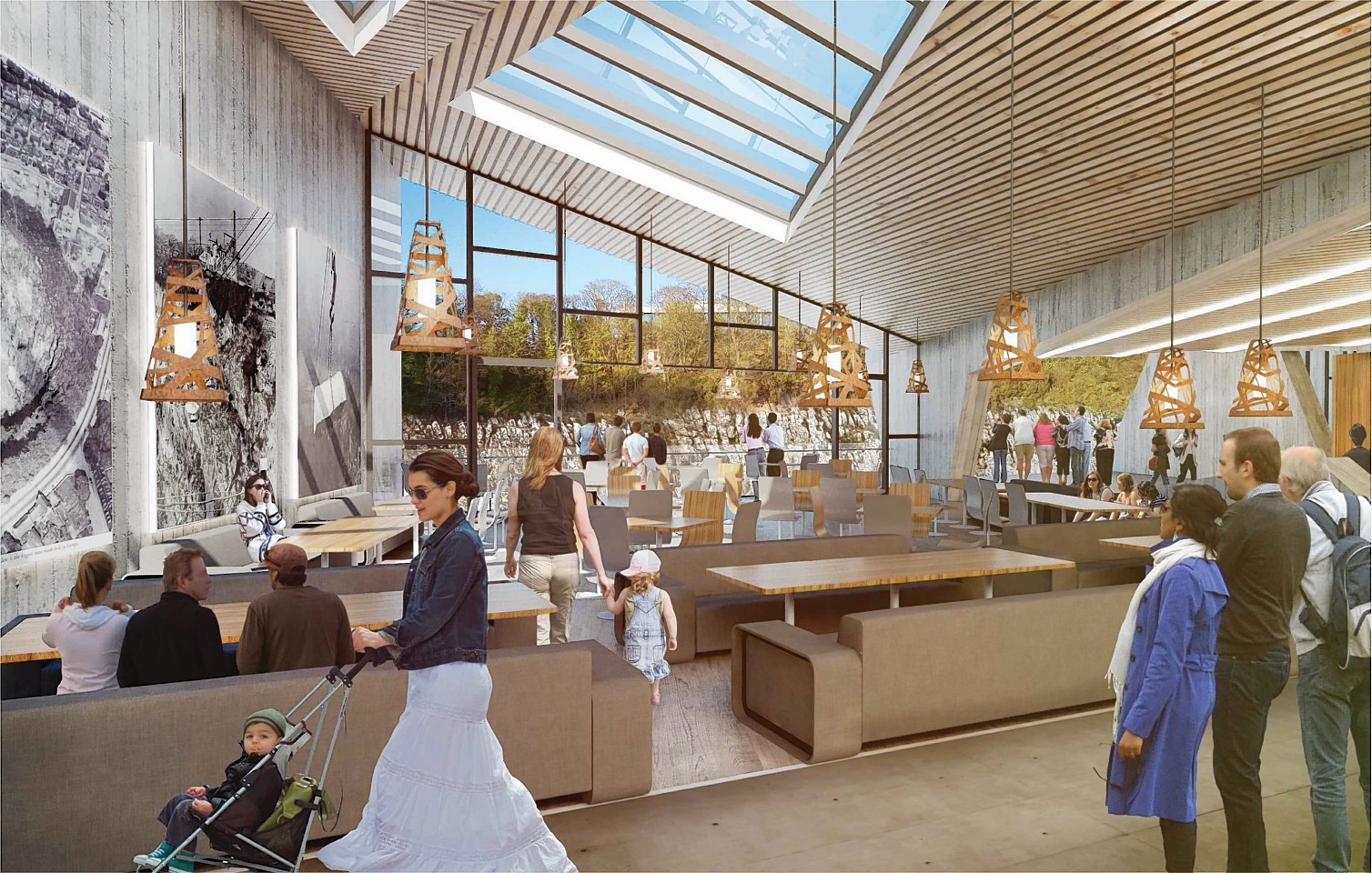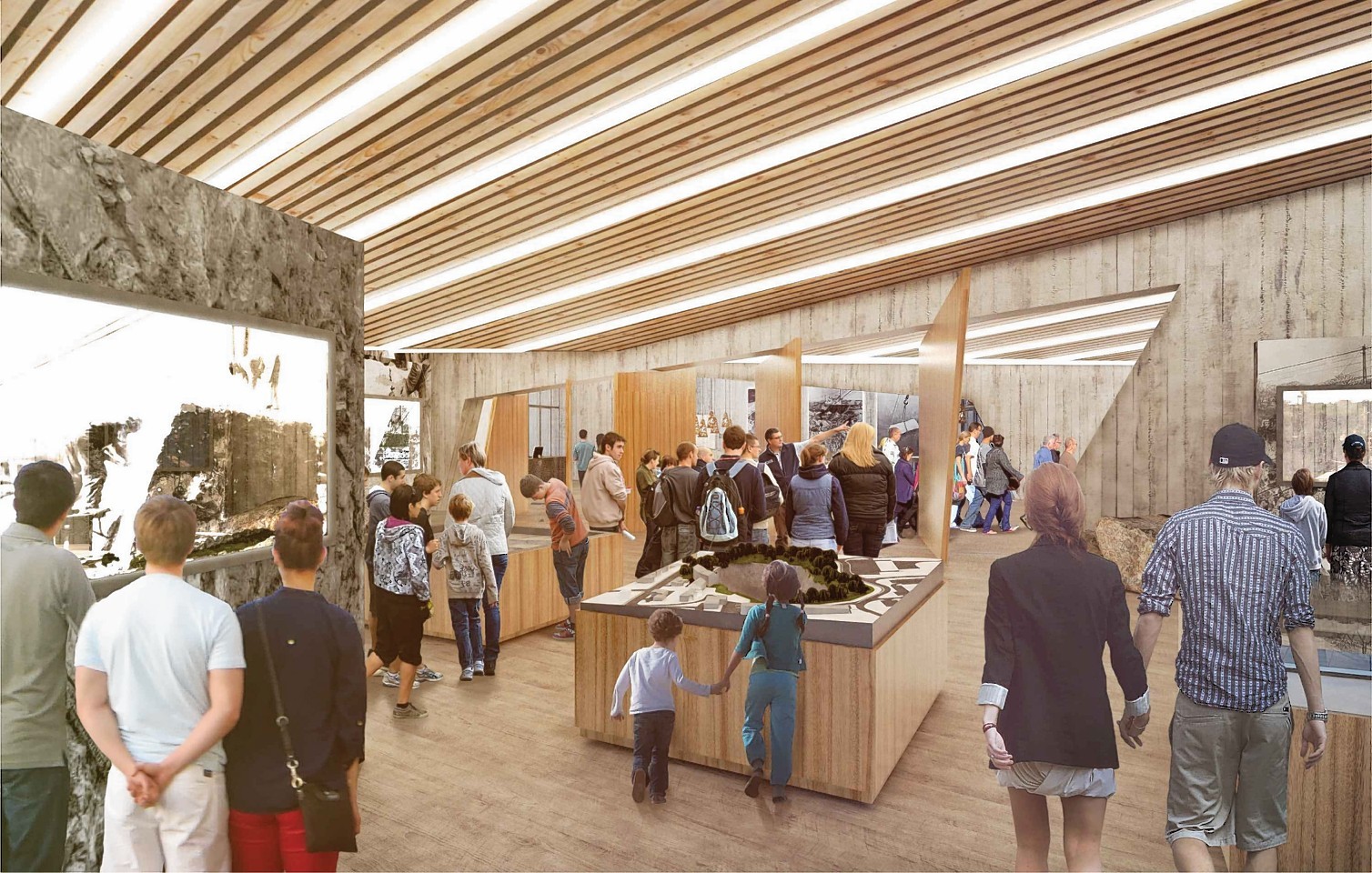It was once the largest man-made hole in Europe, where more than 10million tonnes of granite were excavated and exported around the globe over three centuries.
For proud Aberdonians Hugh Black and Sandy Whyte, the landmark Rubislaw Quarry site represents an opportunity to create a unique monument to celebrate the Granite City’s heritage.
But after nine months of navigating the local planning process, the proposal for the £6million visitor centre could now be derailed by a dispute over just a dozen trees.
The owners were told this week that planning permission could be refused under delegated powers – meaning that it would not be considered or voted on by elected members at committee.
An e-mail from city planner Garfield Prentice revealed that the loss of trees at the southern edge of the quarry to allow for the development would contravene policies on landscape and green spaces.
The owners, who acquired the site in 2010, have strongly disagreed.
A tree survey by chartered forester and certified arboriculturalist Struan Dalgleish found that, of the 85 trees that would have to be removed, only 12 are considered to be in a “fair” condition. The remainder were classed as “poor” or dead .
However, the council position remains that the application is likely to be recommended for refusal.
In his email, Mr Prentice said: “It is considered that the potential positive aspects of a proposed heritage centre do not outweigh the negative impacts on the site, which is designated of being of wildlife and ecological value. It is acknowledged that there appears to be no European protected species on the site. However, the proposal would be likely to have a significant adverse impact on the ecology and habitat of the quarry.”
Mr Prentice also said there has been “no detailed justification or analysis” on why the heritage centre should be located at Rubislaw Quarry. He added: “Maybe such a facility would be more appropriately provided in a more central or city centre location which would be more accessible to visitors and local residents.”
The site owners have expressed incredulity that the loss of a small percentage of trees would be considered to outweigh the heritage centre development on a site that is currently “disused, neglected and inaccessible”.
Mr Black insisted that the ecology and habitat would be improved by the heritage centre development, which will include a water management system to lower the water level, regenerating tree and shrub growth.
He said: “Rubislaw Quarry was officially closed in 1971 and since then the quarry has slowly filled with water which has destroyed hundreds of trees and having a negative effect on the ecology, habitat and wildlife including forcing Peregrine Falcons from the site.
“As part of the heritage development, the water level will be lowered and trees that are in poor condition, which have seeded naturally in the constantly eroding spoil heap from the working quarry, will be removed.
“The 1937 shelf will be exposed when reducing the water level, regenerating tree and shrub growth and improving the local habitat, so that the Peregrine Falcons may return as well as other wildlife.”
The owners have already pumped out a significant amount of the water that had gathered since the site closed in the 1970s.
In August 2012, the owners welcomed Lord Provost George Adam to flick the switch on a pump which has successfully reduced the water level by about 10ft, easing the concerns of neighbours over the potential for flooding.
Mr Black and Mr Whyte have spent the last three years meeting Aberdonians, in adult groups, at schools, colleges and universities, finding unanimous support for the plans.



